Recipe for the best Challah ever.
May 10th, 2010Barbara Kline’s Challah
This makes 2 small/medium size challahs. I find that it’s usually enough for 4-6 people.
First, make the yeast “sponge”
1/2 tumbler size glass hot water
1 tbls. yeast (or 1 envelope) regular not rapid rise
1 tbls. sugar
Stir together and let it do its thing while you combine the other ingredients.
Next, In large mixing bowl, combine:
4 cups unsifted, UNbleached flour
1/4 cup sugar
1 tsps. Salt
Make a well in the center of the flour and pour sponge (frothy head, liquid, and all) into it. Cover sponge with some of the flour mixture.
Add to this . . .
2 beaten eggs
2 tblsp. vegetable oil (canola, sunflower, etc.)
Combine well with wooden spatula or spoon. Begin to knead by hand, adding water until all flour can be absorbed. Add water a little at a
time. The weather (dampness) determines whether you need a little or a lot. Remove from bowl and continue kneading on a formica or stainless steel counter until the dough is smooth and springy (like a baby’s bottom).
Scrape the bowl clean. Pour a little oil into the bowl and return kneeded dough to it, lightly coating all the dough with the oil. Cover with wax paper and let sit for at least four (4) hours.
. . . . . .
When dough has risen double its original size, remove from bowl and punch down to get the air out. Kneed a little more. Divide into two equal amounts for two challahs.
Braiding the challah:
Starting with one section of your dough, divide into four equal amounts. Set the biggest lump aside and roll out three ropes with the remaining three lumps of dough. Braid these three ropes beginning in the middle, stretching the dough as you get to each end. This will give your challah a lovely shape. Repeat this process with the fourth lump that you had set aside, dividing that piece into three parts, rolling them into ropes, and braiding from the center out. Now you have one large braid and one small one. Center the small braid on top of the large one, pressing the two edges deeply into the larger braid below. Secure ends, and let rest for approximately 20 minutes on a greased cookie sheet. Preheat oven at 350 degrees.
After this second rise, paint the challahs with beaten egg and sprinkle with poppy seeds or sesame seeds if desired.
Bake for 1/2 hour. Remove from cookie sheet and continue baking for another 10 minutes, or until challah sounds hollow when tapped on the bottom.
Remove from oven and let cool on baking rack.
Shabbat Shalom!
Eat and enjoy!!!






